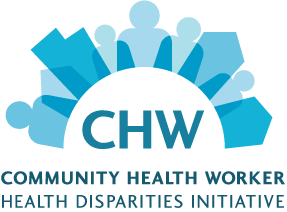1.8 Share Your Success

In this Section
How will you share the progress and results of your program?
Toolkit Tip
Sharing success can help your program last.
This is important in order to interest and involve stakeholders. A “stakeholder” is any person outside your organization who has a “stake” in your program. In other words, it is any person who has an interest in or a need for your program. This can include people who might join your program, community health workers, neighborhood leaders, or funders.
When you share your program’s success, you help to sustain it. This is because people typically will want to help you keep a good program running.
Make sure that you get approval from your leaders first before sharing information about your program. Follow any rules of how your organization already shares information.
Follow the links below to get started:
- Why it is important to share program success
- What you should share with stakeholders
- How to share your program’s success
Helpful Handouts and Tools
- Stakeholders and Messages
 (PDF, 184 KB)
(PDF, 184 KB) - Ways to Share Program Success
 (PDF, 181 KB)
(PDF, 181 KB)
Why It Is Important to Share Program Success
Sharing your heart health program’s success with any person who has a connection to or an interest in your program is important. These are your stakeholders. Stakeholders need to be informed and excited about your program so they can
- Be a part of it,
- Refer people to it,
- Be supporters,
- Promote it,
- Fund it or convince other funders to give you money,
- Give you resources or connect you to resources, and
- Volunteer their time.
Building stakeholder relationships by sharing your program’s success will help you
- Get your program up and running,
- Keep it running, and
- Get support for running it again in the future or sustaining it.
The more stakeholders know about your program’s success, the more they will want to be involved. This is a very important piece to sustaining your program.
Examples from the Field
You can read about Hawaii-based Kokua Kalihi Valley Comprehensive Family Services’ program success in their academic article, “Healthy Heart, Healthy Family: A NHLBI/HRSA Collaborative Employing Community Health Workers to Improve Heart Health” Journal of Health Care for the Poor and Underserved.
Journal of Health Care for the Poor and Underserved.
What You Should Share with Stakeholders
Stakeholders want to see that your program and their interests match up. Decide what information to share with your different stakeholders. Success for one stakeholder might be hearing some of your evaluation results; for another, it could be hearing program highlights.
To think more about what certain stakeholders want to know about your program, check out the handout Stakeholders and Messages  (PDF, 184 KB).
(PDF, 184 KB).
Examples from the Field
Storyboards are graphic illustrations or images displayed in sequence for the purpose of telling a story. They are a great way to share successes with internal stakeholder and future participants. This is also an activity that could be undertaken by an intern or volunteer.
How to Share Your Program’s Success
As you get to know your stakeholders, you will get a better sense of how they want to know what you are doing. Maybe they are busy and prefer you only give them short updates at meetings. Maybe a stakeholder needs you to provide a formal report at the end of your program. Often it is best to use a mix of approaches, such as in-person meetings, reports, and media. Communicate with stakeholder to find out which approach they prefer. Check out the handout Ways to Share Program Success  (PDF, 181 KB) for more information.
(PDF, 181 KB) for more information.








